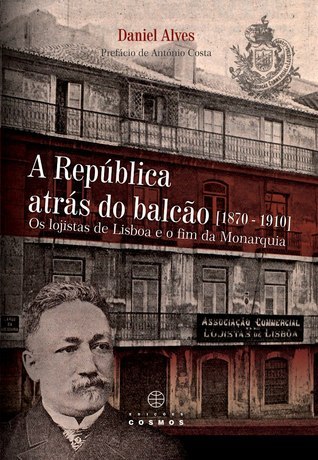Home
Introduction
In August 1902 the British newspaper The Times inserted an article announcing “The passing of the grocer” as a result of a crisis in the small retail trade that apparently had bankrupted more than 900 stores (Winstanley 1983). Across the Atlantic, Canada’s shopkeepers faced a crisis equally significant, with overabundance of shops and a lot of bankruptcies (Monod 1996). The same happened in continental European cities like Paris or Milan, in the final decades of the nineteenth century (Nord 1986; Morris 1993). Much of what happened this time was the result of an demographic growth in the cities in the nineteenth century that almost everywhere would have important consequences in the reorganization of urban space, leading to changes in their economic and social geography. Lisbon was no exception and the city’s retail trade, after a phase of growth in the 1880s, faced a crisis in the last ten years of the century (Alves 2012). This occurred while the city was transformed, witnessing an expansion into new urban areas to accommodate an increasing volume of inhabitants.
Through the analysis of the geographical distribution of Lisbon’s retail trade, between 1890 and 1910, it is possible to verify the impact of this crisis on the way small businessmen apprehended the urban space, as well as the opportunities and risks that those changes could represent to them. This is a truly collaborative study, that is grateful to 35 history students for their work and enthusiasm! It is based on a very detailed information about the localization and characteristics of every single shop in the city streets, gathered from fiscal sources in the municipal archives (around sixteenth thousand records for each of the three years, 1890, 1900 and 1910) and analyzed through the use of spatial analysis tools. This volume of information and the potential introduced by a Digital Humanities / Spatial Humanities approach, brings in methodological challenges regarding the digitization and geocoding process of several thousands of records, as well as opens new research possibilities and new research questions, namely: about the role of women in the retail trade business, since previous work based on smaller sets of data analyzed with traditional qualitative methods had misrepresented or even ignored gender issues in the retail business (Alves 2012); or about the influence of the dwelling rents in determining changes in the social space of a city in the Belle Époque, only possible by the digital analysis of a very large, temporal and geographical encompassing amount of data for all the city.
In the current version of the database (October 2021) it is possible to search the data and explore on the map (the map will take a little to upload the first time, please be patient) for the shops in the year 1890. Of the 11.970 records available in the archive for that year, it was possible to geocode and present here 10.267 (85,8%) shops.
The students: Adriana Pinto, Alexandra Gomes, André Godinho, André Pita, Andreia Louro, Bruna Vicente, Catarina Miranda, Catarina Neto, Daniel Santos, Daniela Major, Filipa Nunes, Gil Gonçalves, Gonçalo Carvalho, Henrique Neto, Hugo Cacheira, Indira Leão, Inês Ferreira, Joana Filipa, Joana Ribeiro, João Duque, José Pardim, Leonardo Pires, Madalena Fonseca, Manuel Caiado, Mariana Pereira, Paulo Jorge, Patrícia Pires, Rafaela Ferreira, Raquel Novais, Rui Freitas, Rute Mendes, Sara Januário, Sofia Negrão and Sofia Pedras.
